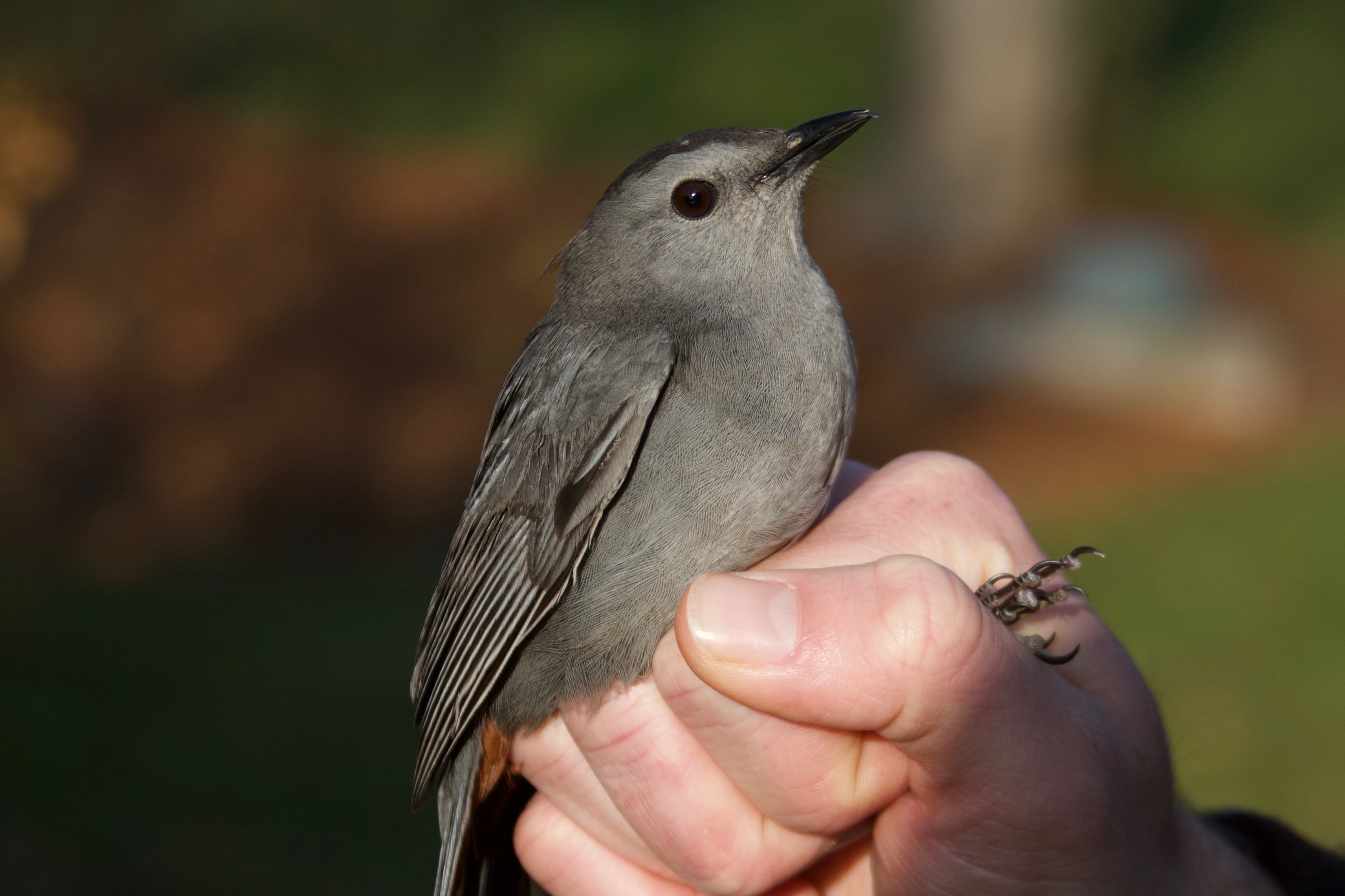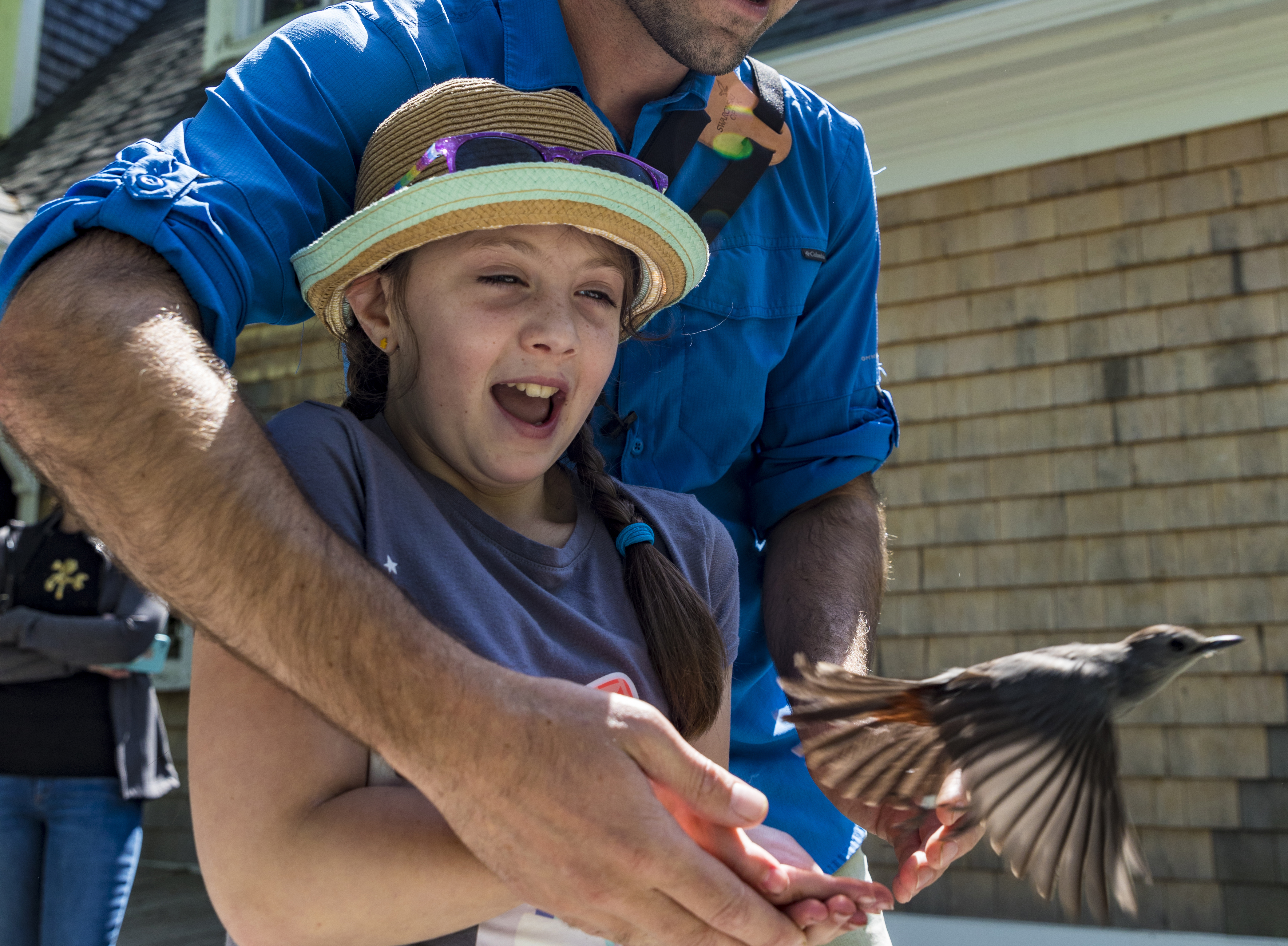Several species of goldenrod including Seaside Goldenrod are blooming on the Holmes Farm. The low-growing Flax-leaved Aster (Ionactis linariifolia) has created a purple carpet on the sunny hills of the farm. We finished the week with 134 new birds banded, 98 recaptures processed, and six new species for the week. Our totals for the fall season are now 775 new birds banded, 521 recaptures processed, and 60 species. Some of our new species for the week included Myrtle Warbler, Red-bellied Woodpecker, and Hermit Thrush.
We started Monday with fog surrounding Manomet, which eventually cleared, but the rest of the day remained overcast. The bright red of Virginia Creeper showed a sharp contrast with the gray sky. A small rainstorm passed over us Monday night but brought little relief from the continuing drought. Tuesday was humid and warm, almost a return to summer with temperatures rising into the mid-70s. We caught our second Hooded Warbler of the season, this time a female with no black hood. Although it was mostly calm, the slightest breath of wind sent leaves spiraling continuously into the nets. We also caught our first Yellow-breasted Chat and a Western Palm Warbler. These are uncommon Manomet captures with only four individuals caught in the last ten years!
On Wednesday, strong winds gusting up to 50 miles per hour battered the coast. The wind howled through the Widewater house—the location of the lab and our dorm rooms—causing windows to shake and eerie noises to echo through the building. The system did bring a little rain with it that coaxed a few Wood Frogs onto the net lanes, and Cynthia spotted an American Toad sheltering under some leaves. Down in the parking lot, the tupelo trees were full of Gray Catbirds and American Robins. There was even a robin exhibiting leucistic characteristics (leucism is a partial loss of pigmentation which results in white feathers).





 Back to all
Back to all

